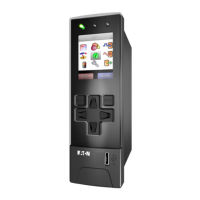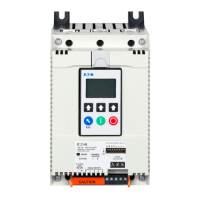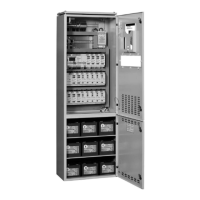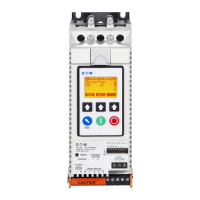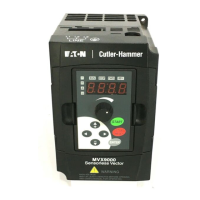SC100 Handbook
Copyright © 2008-2011 Eaton Corporation. All Rights Reserved.
IPN 997-00012-63C August 2011
The system bus voltage (as measured by the bus voltage sensor) is more than from
2.0V away from the corrected average rectifier output voltage.
If the bus voltage sensor has failed, the system bus voltage is determined from the
rectifier output voltages.
The Battery Characterization control process is active. See Battery Characterization
on page 37.
Configuration file is missing or invalid, installed rectifiers have different nominal
output voltages, or the number of cells in a battery string entered in the
configuration file does not match the nominal rectifier output voltage. See
Troubleshooting on page 56 for more information.
The signal from a mapped current sensor is out of range.
The Equalize control process is active. See Equalize on page 18.
The Fast Charge control process is active. See Fast Charge on page 19.
The bus voltage is above its normal range (set by the High Float Threshold).
The bus voltage is higher than the safe range for the load and/or battery (set by the
High Load Threshold).
The batteries are discharging (indicated by negative battery current).
A load fuse has blown or a load circuit breaker has operated (indicated by an active
digital input with Function "Load Fuse Fail").
The bus voltage is below its normal range (set by the Low Float Threshold).
The bus voltage is lower than the safe range for the load and/or battery (set by the
Low Load Threshold).
LVD Characterization Error
An LVD contactor must be characterized. See Low Voltage Disconnect on page 29.
An LVD contactor has disconnected the battery or load. See Low Voltage Disconnect
on page 29.
An LVD contactor is faulty or the control cable from the I/O board is disconnected.
See Low Voltage Disconnect on page 29.
An LVD is set to MANUAL CONNECT or MANUAL DISCONNECT. See Low
Voltage Disconnect on page 29.
The SC100 has lost communication with the I/O board.
The SC100 has an internal fault.
One or more MOV cartridges have failed and must be replaced (indicated by an
active digital input with Function set to "MOV Fail").
Multiple Rectifier
Comms Lost
More than one rectifier has lost communications. See also Rectifier Comms Lost on
page 64.
Multiple rectifiers are faulty or their ac supply has failed without causing partial or
total ac supply failure.
A digital input with Function set to "Phase Fail" is active, or more than 20% of single-
phase rectifiers are reporting ac supply failure, or all 3-phase rectifiers are reporting
loss of the same phase.
Normally this alarm indicates that a rectifier has been removed during routine
maintenance. However, faulty rectifier communications or losing the rectifier
communications bus can also trigger this alarm. If removing multiple rectifiers
triggers this alarm, reset it from the keypad before it triggers an external alarm.

